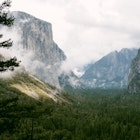
May 12, 2025 • 8 min read
You'll be smitten by one of Greece's loveliest islands.

May 12, 2025 • 8 min read
You'll be smitten by one of Greece's loveliest islands.

May 12, 2025 • 13 min read
If you are looking for a Scotland itinerary that goes beyond the clichés, try this 8-day tour across the Outer Hebrides on Scotland's scenic west coast.

May 12, 2025 • 7 min read
Croatia’s diverse hiking trails are the country’s best-kept secret. Here are our favorites.

May 12, 2025 • 9 min read
Packed with historical sites, incredible museums and endless options for food and nightlife, these are the top things to do in Washington, DC.

May 12, 2025 • 9 min read
You'll find offbeat beaches, orange groves, flamingos and more in the Algarve. Here's how to get around.

May 12, 2025 • 9 min read
Plan your time and budget on your first trip to Montenegro with this guide.

May 11, 2025 • 8 min read
Explore the legends of the Maya at Chichén Itzá's majestic temples and towering pyramid.

May 11, 2025 • 8 min read
From wearing the right shoes to securing permits for popular trails, there are important rules to remember when visiting a US national park.

May 10, 2025 • 9 min read
Two of our editors take us on the ultimate NYC summer walk through Manhattan.

May 9, 2025 • 8 min read
From swimming in cenotes and eating street food to soaking up the history and culture of this vibrant nation, here are the best things to do in Mexico.

May 9, 2025 • 7 min read
With world-class art and culture, outstanding natural landscapes and lively shopping, LA is an amazing playground for visitors and locals.

May 9, 2025 • 8 min read
India's UNESCO-listed "toy trains" offer a trip back to the golden age of rail travel. Here's everything you need to know about these famous rail journeys.

May 9, 2025 • 6 min read
Get ready for your backpacking adventure with our essential packing tips to choose the right backpack, maximize space and pack versatile clothing for any trip.

May 9, 2025 • 4 min read
You're finally taking that trip to Italy! But now the panic over what to pack starts. Don't worry, I've got all the tips and tricks you need.

May 9, 2025 • 6 min read
Stroll the iconic waterway, tour historic sites and soak up the vibrant dining scene: here are some of the best experiences in San Antonio.

May 9, 2025 • 7 min read
Dude ranches can bring you a taste of frontier life, including fishing, horseback riding and that sweet fresh air – here's how to choose the best one.

May 9, 2025 • 7 min read
After the action of New York City, slow down with Hudson Valley outdoor art museums, Long Island mansions and Thousand Island cruises.

May 9, 2025 • 10 min read
Kōbe is so much more than its famous beef. Find out more about this fascinating city with our guide to its top experiences.

May 9, 2025 • 7 min read
Get to know Bermuda's culinary scene with these flavorful drinks and dishes.

May 9, 2025 • 11 min read
Here is how to plan your trip to Monaco, from the typical glitz to what's hidden beyond.

May 9, 2025 • 4 min read
Featuring everything from cattle mustering to fly fishing to well-being activities, these are the best spots to make your cowboy (and girl) dreams a reality.

May 9, 2025 • 6 min read
Alluring and well-known attractions – from island escapes to refined gardens to mysterious swampland – are just a short hop from Miami.